Prison is known for a lot of eccentric happenings, including inmates getting tattoos. Prison tattoos exist to ally one with certain factions, establish rank and reputation, and (maybe not even consciously) as a way to tell their stories. The tattoos are created using homemade kits, which are typically unsanitary and often wielded by those with rudimentary skills at best. Still, prison tattoos are a common practice, and are found all over the world. One country famous for its tattoos is the Russian prison system, where tattooing traditions go way back.
In prisons and labor camps, tattoos sported by prisoners were much more than decoration. They would be pictorial stories of the reason they were in prison. They would show rank among their fellow prisoners. They were an outlet to express attitudes on the current government and society (generally not a positive one).
Symbols and even placement of tattoos would be adopted to represent different ideas, such as cats for home burglars, military-style medals to show prison rank. At the same time, tattoos could be given as punishments, branding someone forever as an informant or someone who broke a criminal “code.” Law enforcement officials also found the tattoos useful; the more unique a tattoo, the easier it is to identify an unknown person…or a body.
After realizing that tattoos were a serious method of communication among prisoners, law enforcement in Russia began to prison tattoos. Between the mid 60s and the mid 80s, Arkady Bronnikov, an criminalistics expert from the USSR’s Ministry of Internal Affairs, documented hundreds of inmates at correctional facilities in the Ural and Siberia regions. He took their photos and interviewed them about their tattoos. His records helped police with many cases, identifying criminals and bodies. In 2013, an English design firm and publishing house, FUEL, acquired Bronnikov’s files, which had been only available to the Russian police. The 918 photos and their descriptions were compiled into a book, which is now available for sale.
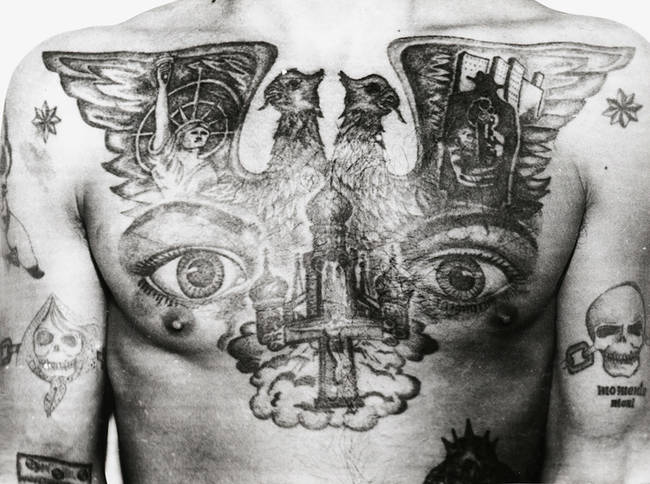 share
share
The double-headed eagle is a traditional symbol of Russia. It can be interpreted as a statement against the Communist regime, reinforced by the Statue of Liberty on the left side. Yet it can also have racist connotations, and the shadowy figure with the gun symbolizes a willingness to commit violence. The eyes display watchfulness, and that this person is an “overseer” of criminals.
 share
share
The snake around this man’s neck probably symbolizes addiction. (Many criminals are/were substance abusers, something that can continue even in prison.) The stars and epaulettes on the shoulders, though, show that he’s an authority member among his fellow inmates.
 share
share
This inmate was clearly influenced by American media, with likely depictions of Mafia-esque crime. The gun has the letters “US” on it, and the eyes once again indicate watchfulness.
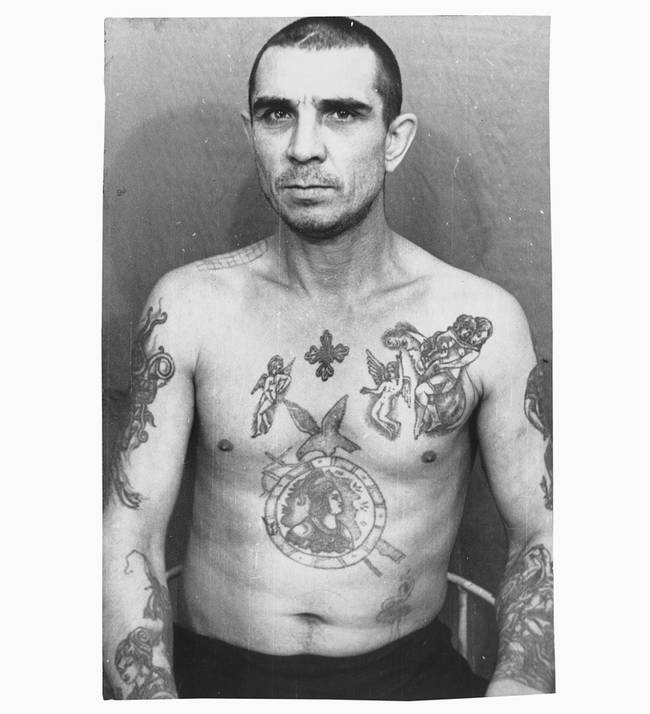 share
share
While this man’s tattoos look like those of his fellow inmates (many of whom were thieves), his lack of stars (the symbol for thieves) shows that he is not a thief. He also probably holds little to no rank among the rest of the prisoners. Imitating the more powerful prisoners was popular, as it allowed them at least some measure of safety and respect.
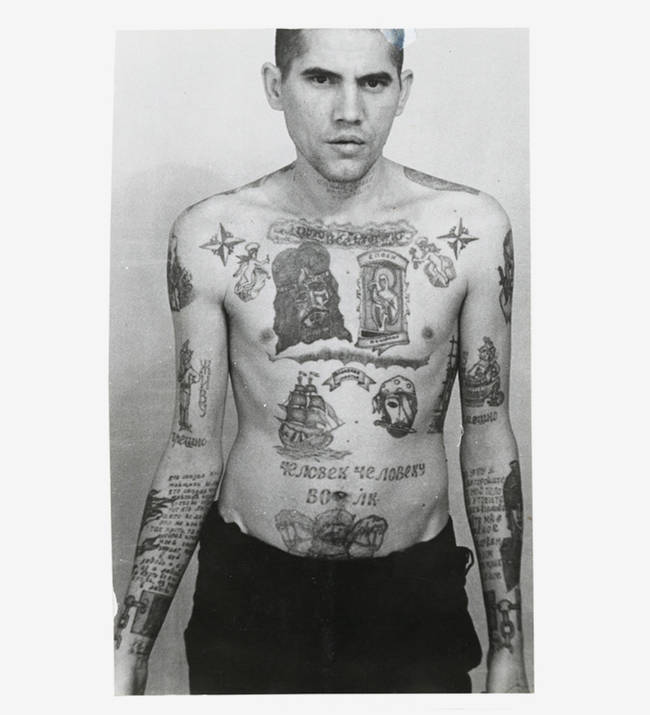 share
share
On the right side of this person’s upper stomach is a pirate holding a knife in his teeth, with the acronym “IRA” across the blade (hard to see in this picture). “Ira” is a woman’s name in Russian, but it also stands for a phrase that means “I’m off to kill the activists.” “Activists,” in this case, are prisoners who cooperate with prison authorities. The tattoo makes this man part of a clique that openly flaunted prison rules and tended towards violence.
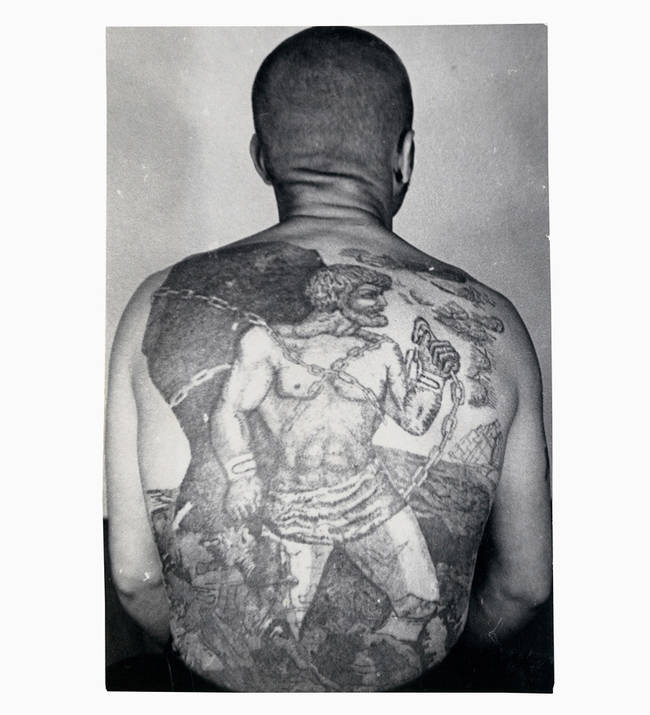 share
share
Classical themes and art are common. This man has Prometheus of Greek mythology, who was chained to a rock after disobeying Zeus. However, the sailing ship means he may be prone to escaping.
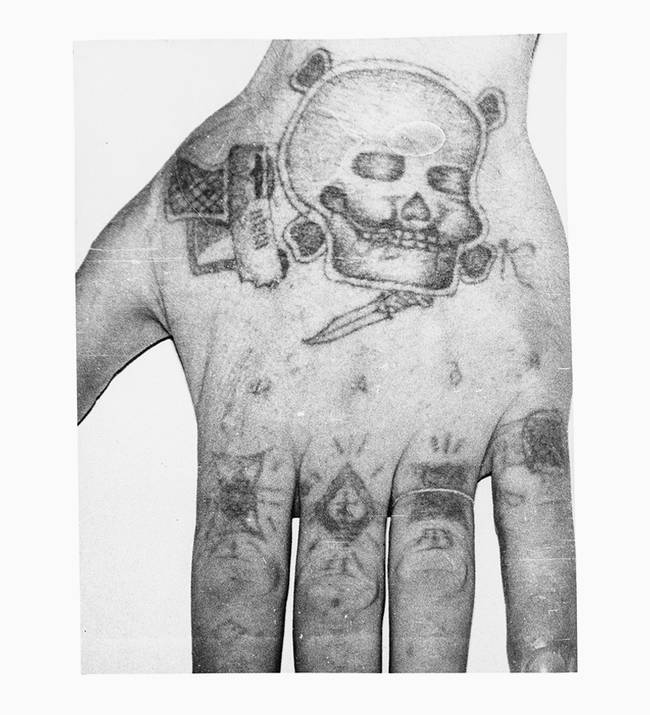 share
share
Knuckle tattoos had meanings that often told the bearer’s story. The middle finger with a cross indicates this inmate was a pickpocket. The ring finger indicates that he served a complete sentence without parole. The pinky indicates that he spent a lot of time in the “punishment cell,” which explains the lack of parole. The violent imagery on the back of the hand, as well as the K, signify a killer.
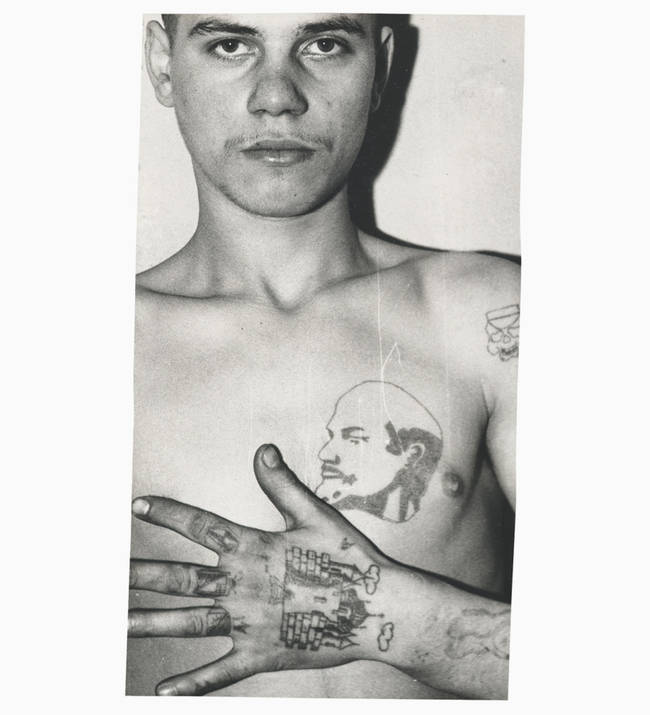 share
share
Again, this prisoner’s story can be deduced from his hand tattoos. They state that he’s openly hostile towards prison authorities, was convicted as a juvenile, and is not planning on relinquishing his criminal ways.
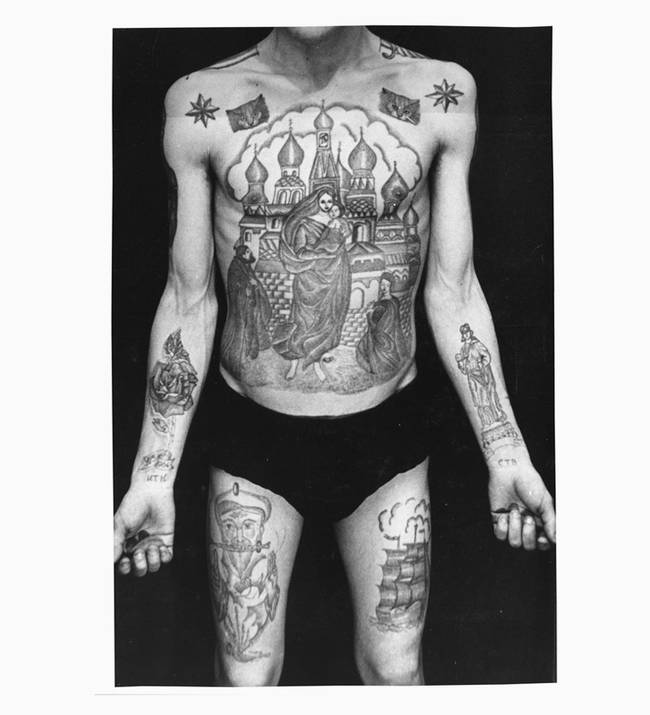 share
share
Churches and religious images are often seen on the chest. Yet instead of meaning anything spiritual, they meant that the inmate was “clean” in terms of the criminals’ honor system, and he has not betrayed his fellow thieves. The number of domes usually indicated the number of convictions. This man has six. Above the church, there are two cats’ faces, indicating a burglar of homes.
 share
share
Sometimes tattoos were less symbolic and more literal, like this man’s. The text on his forearms is a statement about his life as a prisoner. The right arm reads, “The court only deprived me of freedom, but nobody deprived me of human feelings. And the years go by, and my temples have gone grey, and my youth has been damaged.” The left says, “Comrades, think of me every now and then. When the law sentenced me, in desolate camps of the taiga, I lived under the name of ‘prisoner.'”
From a perhaps less immediately practical viewpoint than criminal identification, Bronnikov’s records show more than just identifying marks on criminals. They also show the personal histories of each criminal, written in their own “words.” These histories are encoded within a unique set of symbols, and serve as a rather dark alternate version of history. These men all went through quite a lot in their incarceration, and certainly didn’t want this fact to go unnoticed and forgotten.
(Via Designboom)
 share
share
 share
share
 share
share
 share
share
 share
share
 share
share
 share
share
 share
share
 share
share
 share
share



